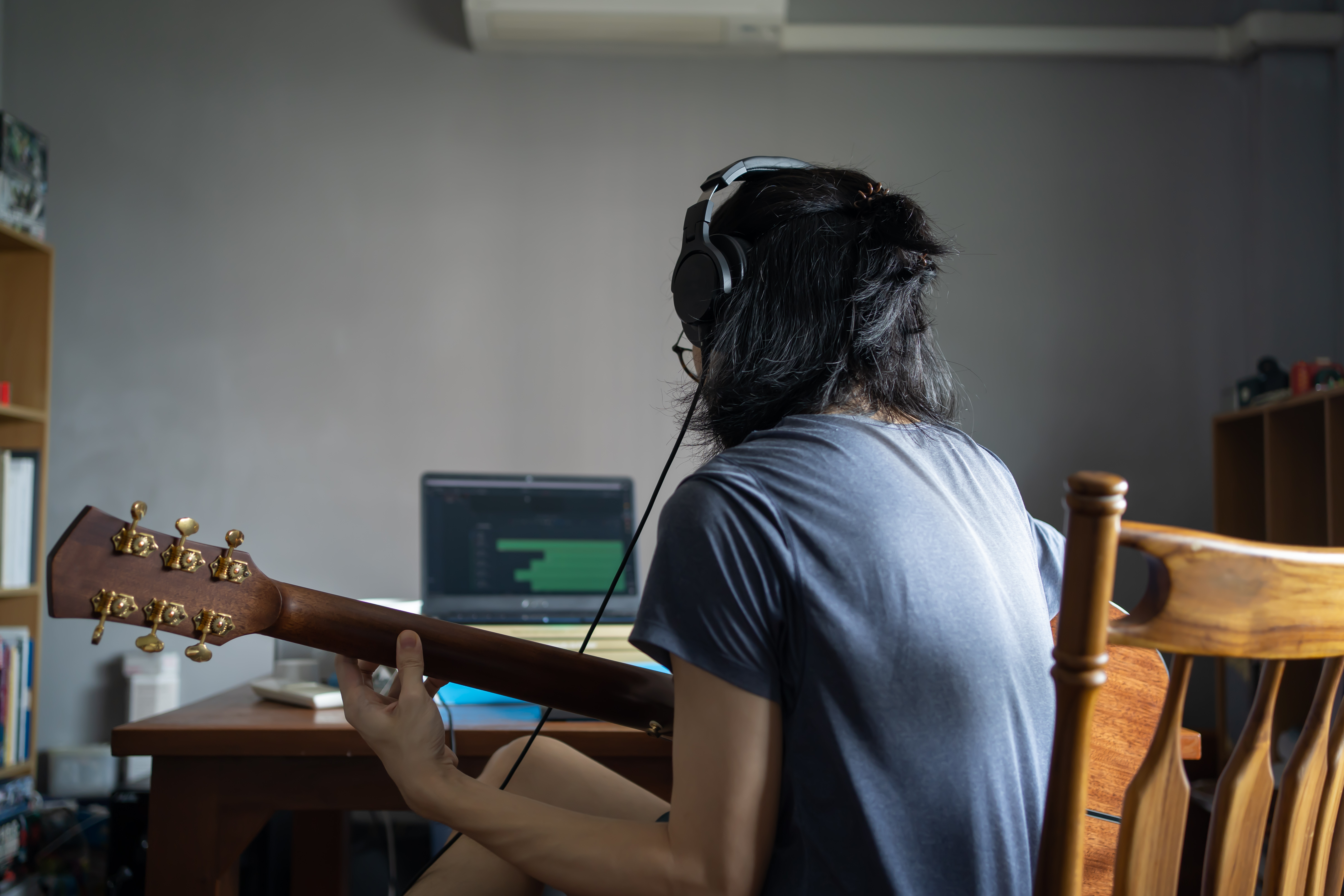How to finish an EP in 30 days: self-releasing your EP
As our 30-day EP bootcamp draws to a close, we advise you on the most effective ways to share your tracks with the world

Our guide to writing, finishing and releasing a three-track EP in 30 days kicked off at the beginning of March. If you're just getting started, head over to the first instalment to begin there. If not, read on for our final edition...
OK, so you’ve spent the last 30 days finishing your EP, and (we hope) you’ve got something you’re happy to share with the world. So how do you do it? There’s a somewhat bewildering array of options available to artists looking to share their music online these days, so we’ve rounded up a few of the best.
Getting your music up on streaming services is called digital music distribution. This used to be the domain of big, multi-national record labels, but those days are long gone.
Now, you can get your music in the hands (and ears) of fans using streaming services like Spotify and Apple Music with relative ease, and very little investment. Every distribution service is unique: some will charge you up front, some will take a cut of any earnings you make, but some are entirely free. Here’s our pick of the top three.
- How to finish an EP in 30 days: Week 1 - inspiration
- How to finish an EP in 30 days: Week 2 - generating ideas
- How to finish an EP in 30 days: Week 3 - creating an arrangement
- How to finish an EP in 30 days: Week 4 - mixing and mastering
Three decent distributors
1. DistroKid
DistroKid is the only distributor that lets you upload an unlimited amount of music to stores after one payment, without taking a single penny from the earnings that music brings in. Like any distributor worth their salt, they’ll get your music into Spotify, Apple Music, TikTok, Pandora, Amazon Music, Tidal, iHeartRadio, Deezer and more.
They ask for a small upfront payment, after which you can upload any amount of music you want for an entire year to stores. They also offer a host of other useful features for up-and-coming artists, and make it easy for you to split payments with musical collaborators.
2. CDBaby
CDBaby isn’t the cheapest option on this list. They’ll charge you a fee per single or album released and take a 9% cut of your royalties. However, they do offer a full-spectrum service that can help you tap into all available revenue streams as an artist, helping you get set-up with performing rights organisations and collecting publishing royalties, on top of sync licensing for film, TV and video games.
Get the MusicRadar Newsletter
Want all the hottest music and gear news, reviews, deals, features and more, direct to your inbox? Sign up here.
3. RouteNote
If you’re looking to distribute your music for free, RouteNote is the way to go. They’ll upload your music to all major stores for absolutely nothing, but they will keep 15% of any earnings you make. If you don’t fancy splitting your royalties, then they have a Premium tier that allows you to keep 100% of your earnings - but on this tier, you’ll be charged for every release you distribute.

Three solid alternatives
1. Bandcamp
We love Bandcamp. In comparison to other music giants like Spotify and Apple Music, they’re a pretty decent bunch, who seem committed to helping artists make money from their music, rather than just raking in profits at their expense. We're hoping that this ethos continues following their recent takeover by Epic Games.
Bandcamp is a brilliant alternative, but as it stands, it’s not a replacement
Inverting the economic model that streaming services have created, in which artists receive only a small percentage of the money their music makes, Bandcamp takes only 10% of any earnings - the remaining 90% goes in the pocket of the artist. During the pandemic, they decided to waive their revenue share entirely for one day every week, which they called Bandcamp Fridays. Over the course of those 15 days, 800,000 fans paid artists and labels $61 million dollars.
For these reasons and many more, it’s a great idea to set up a Bandcamp page to host and sell your music. That’s not to say you should avoid streaming services entirely, though. Bandcamp is a brilliant alternative, but as it stands, it’s not a replacement.
It’s not an easy place to promote your music or to be discovered by potential fans, and the majority of listeners aren’t likely to be consuming music on Bandcamp regularly. We recommend using the platform alongside one of the more conventional distributors mentioned above.
2. Soundcloud
SoundCloud became hugely popular in the midst of the previous decade after fans and artists became enamoured with its unique platform, which offered a new way to share and discover music. The service subsequently played a pivotal role in launching the careers of a number of artists, including Billie Eilish, Chance the Rapper and Post Malone.
Though it began as a place to promote and share your music - not to earn money from it directly - SoundCloud is now operating on a similar model to most streaming platforms, and pays artists royalties like they do. The key difference between SoundCloud and companies like Spotify is that SoundCloud pays what they call “fan-powered royalties”, which come directly from the subscription fees and ad revenue that an artist’s listeners generate. According to SoundCloud, this means that smaller indie artists with a dedicated fanbase can earn more on their platform.
3. YouTube
Though it’s seen primarily as a video sharing platform, YouTube is technically the world’s largest music streaming service. It also happens to be the second most-visited website on the internet. Consequently, uploading music to YouTube makes a lot of sense. If you’re sharing a music video alongside your tunes, then it’s a no-brainer: YouTube is the place to be.
YouTube is technically the world’s largest music streaming service
And if not, there’s still a good case to be made for sharing your music on YouTube, even as a basic video with the album art attached. If you pick up some traction with viewers and fall in favour of the platform’s algorithms, you could end up a fixture of the YouTube sidebar and gain thousands of new fans. Make sure you use a digital distributor alongside YouTube, though, as that’s the only way you’ll be able to monetize the music in your videos.



I'm MusicRadar's Tech Editor, working across everything from product news and gear-focused features to artist interviews and tech tutorials. I love electronic music and I'm perpetually fascinated by the tools we use to make it. When I'm not behind my laptop keyboard, you'll probably find me behind a MIDI keyboard, carefully crafting the beginnings of another project that I'll ultimately abandon to the creative graveyard that is my overstuffed hard drive.









